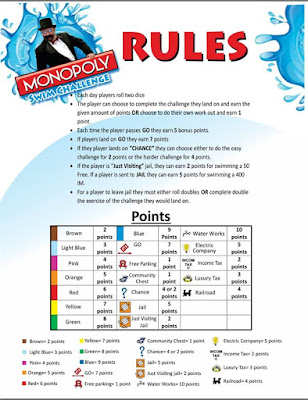Game Elements
Game Elements
In my reading for week 4, I read and learnt about 'what are the elements of games?'. I enjoyed this read as I learnt a lot of valid information. The first element I read about was player.
-Player: A game needs a player for it to work. The amount of players can vary from 1 player to 2-15 players. There's many types of player structures when it comes to a game, two examples are, Head-To-Head: this is when its 1v1 eg, chess. Another example is one-against-many: eg, Build-up chasing which is chasing but every time you catch someone they join you.There are much more types of player structures, so here's a link to some more:https://learn.canvas.net/courses/3/pages/level-3-dot-1-1-players
-Objectives(goals): Every game has a goal/objective in it weather it be to cross a finish line or save a friend from evil bosses. every single game has to have a goal for the game to work properly and for the game storyline to make sense.
-Rules: There are three types of rules in a game: setup, progression of play and resolution. Setup=Things you do at the beginning of the game.
Progression Of Play=What happens during the game.
Resolution= What happens at the end of the game.
An example of a rule in a game is Dodgeball, and one rule is that you can't kick the ball.
Resources And Research Management: This is when everything is under control in the game. For example, in 21 questions , people have to make sure that there is only 21 questions being asked and no more.
Game State: Some things in the game aren't owned by a single player ,for example , a building in Monopoly isn't owned by anyone until they get a chance to buy it in the game.
Information: Information is different in games. Some information is informed to everyone like X&O'S but some information is private like in poker, only the person themselves can see what cards they are dealt with.
Sequencing:Sequencing involves the order in which the game is played. Some games are played where everyone answers at the same time or against each other like the game 'Family Fortune'. Most games are played in a given order like the game'Snakes & Ladders'.
Player interaction: Player interaction is often-neglected but is very important. One type of interaction could be direct conflict like in the game 'Dungeons & Dragons' where the person chooses when to attack the other person. Another type of interaction is trading like in the card game 'Pokemon' where people might trade cards to better their playing deck.
Theme: Every game needs a theme. A theme consists of narrative, setting and backstory. A setting is important for the player as it adds an emotional connection to the game. If a game has an intriguing backstory and narrative it will make the player invested into the game so much more.
Games as systems: If you change one of these elements in a game, it makes the game a very different game to what it was. When making a game, the designer has to make sure they put the same effort into each element to balance out the game perfectly.
I learned about these elements of game by reading short but effective paragraphs thanks to this website:https://learn.canvas.net/courses/3/pages/level-3-dot-1-1-players
An image of an example of rules in the game Monopoly.




Comments
Post a Comment